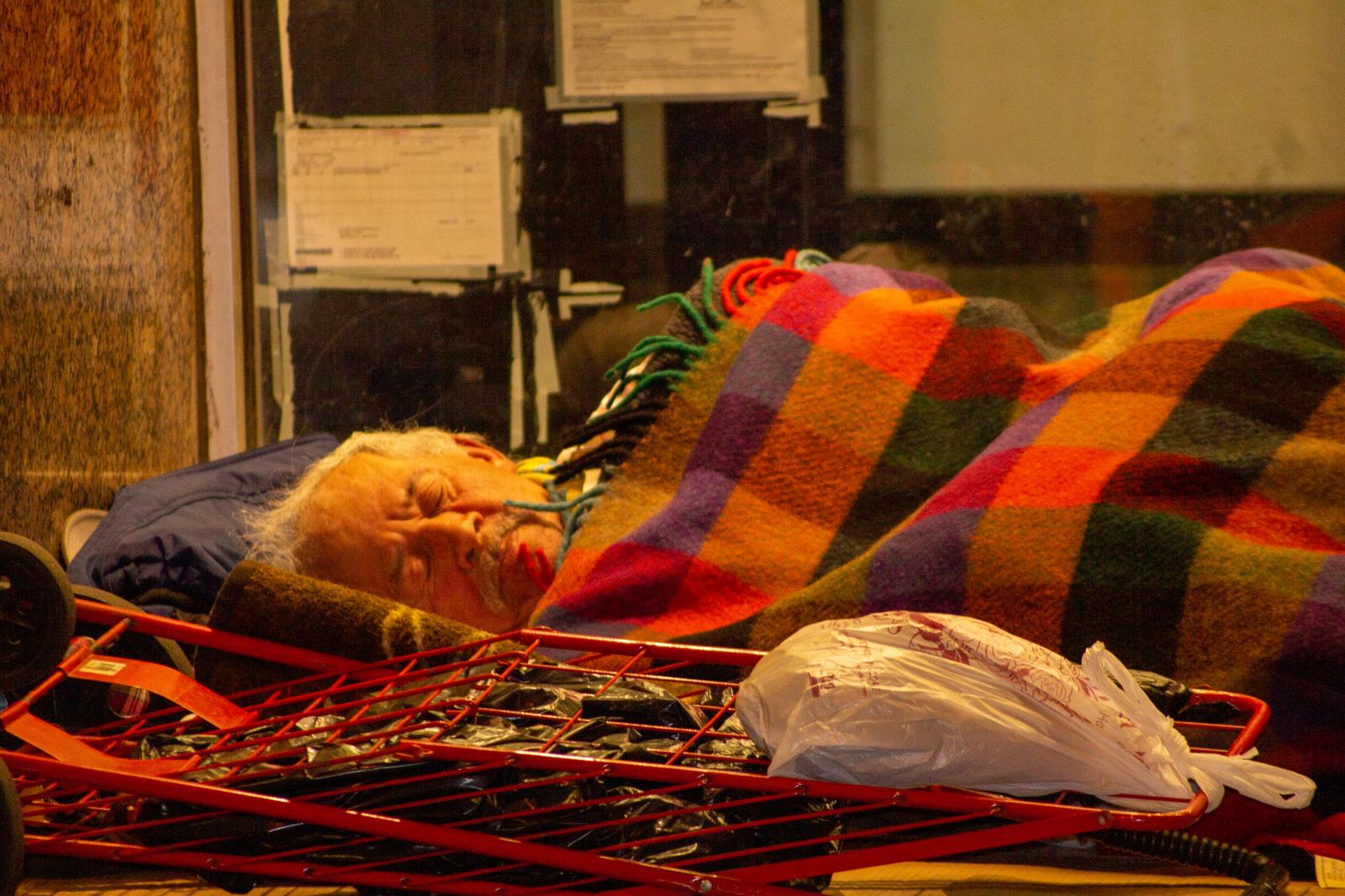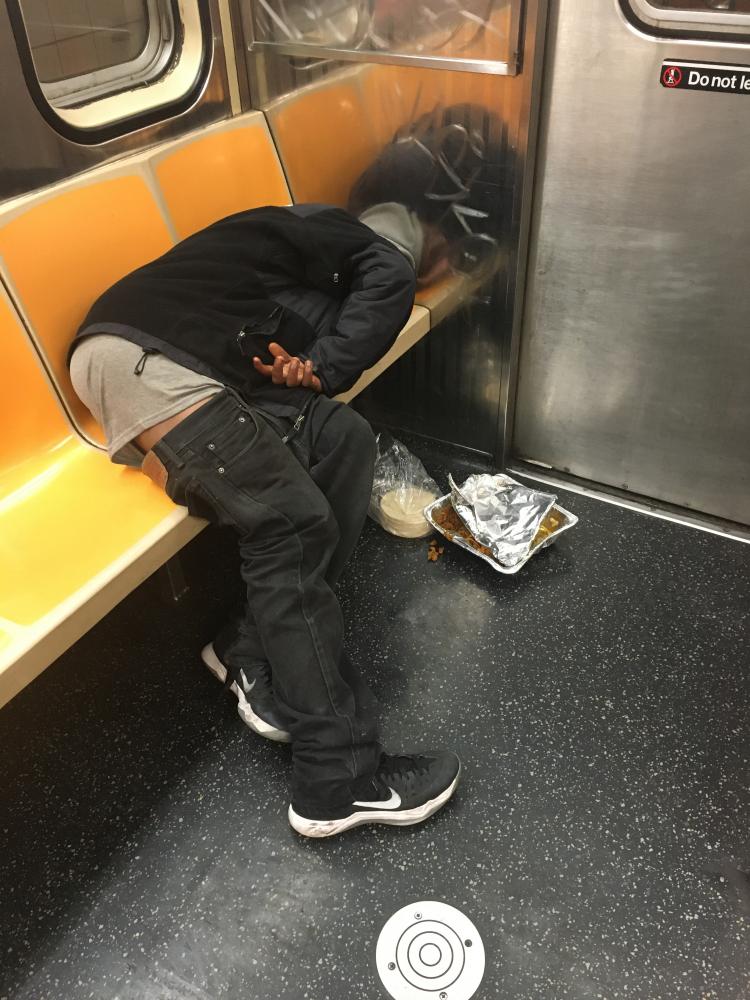Public Story
Nowhere To Go
The homeless are abundantly apparent when they are around, asking for your money or taking up space on your train; however people pass them by like they are invisible all the time. By the end of the 90's up until 2020 the homeless problem was slowly dissolving. With political changes and the transformation of Times Square into a sort of quasi-Disney archetype of chain stores, lights, and attractions. New York found itself with more tourists on the streets, calling for more Police and less homeless.
I saw my favorite bars, mom and pop shops, and restaurants close as the neighborhoods that were cheap and cool transformed into hubs for college transplants looking to use Manhattan (and possibly Brooklyn) as a playground for a decade; accompanied by the more pricier neighborhoods being sold off to rich people from abroad, namely Chinese, Russians, and wealthy Emirates, I use to wish for a torn and torrid 42nd st of my childhood where hookers and junkies strolled the orange and red haze of porno theatre marquees, and newspapers bounced through the streets like tumbleweeds in a western. Well my childish wish seems to have eerily come to fruition.
As the city closed down because of the Pandemic in March, my main form of income, the Bar and Restaurant industry absolutely got leveled. I decided to pick up my previous part-time job as a food delivery guy on a bicycle working for Delivery Apps to make whatever I could to survive. Working by bike, I was constantly on the street. As I was delivering I noticed the growing amount of homeless on the streets, and later in the summer when things attempted to get to normal, the subway benches became their beds. I started carrying my camera with me to document things.
Small things were starting to become widely apparent like empty streets at 8pm on a Saturday night, people wearing medical masks everywhere, stores shuttered, and then riots and protests in the late spring due to a man being murdered by Police. They all had to be captured. But among photo journaling these other huge events, one thing in particular kept capturing my attention. The homeless. I started asking questions. To cops, to friends, reading online. I will admit my own fear of the Coronavirus at the time prevented me from conversing up close and personal with the homeless to get a direct response from the source. But if you too are wondering about the people on the street. Here are a few factors.
To begin with in 2019 it was announced that they planned to close Rikers Island, the notorious jail complex by 2026. So over the past year many inmates, mostly those with minor offenses and with mental health problems, have been released with nowhere to go. And apparently when the coronavirus hit Rikers, it sped up this process.
Next, the already existing homeless shelters. Because of the previous debacle mentioned above the homeless shelters started to get overcrowded. Now according to articles in The New York Times and The Post, these shelters were not informing the people staying there if someone contracted COVID on premises, they were covering it up, sometimes under the guise of "patient privacy". This caused a lot of people to leave the shelters out of fear of contracting COVID. It had also been stated in those articles that the homeless were afraid of the hostility growing in the shelters, especially towards anyone who would sneeze or cough, showing any sign of sickness. Some of these shelters popped up in hotels in affluent neighborhoods, such as The Lucerne on the upper west side. Hence the malls of Broadway being swelled with homeless people screaming obscenities at the locals, and sometimes punching Canadian Celebrity's like Rick Moranis in the face. it's possible Ghostbusters had a negative effect on the suspect who was eventually apprehended.
The violence was growing. I could feel it in the streets. Aggressive behaviour were multiplying like Gremlins in water and the overwhelming energy of the George Floyd/Black Lives Matters protests; and the fear of the virus, helped fuel this edge. For the first time in my adult life I was continually looking over my back in New York City.
I personally don't think the growing homeless problem was solely an ex-inmate, or the existing homeless deciding to abandon shelters. I factor in depression and isolation which blossomed like an evil weed during the Pandemic. I believe this led to alcohol and drug use which led to people basically ending up in the street after their fix. I saw many people whom I believed their bender led them to a place they normally wouldn't want to be. My gut tells me a lot of the disheveled and agressive behaviour was just the lonely and lost who basically lost it.
And finally, with some of the photos you will see there are some people who actually constructed a little house for themselves with their own luggage. I saw this quite often. The only thing I could squeeze out of this image was it was a person hanging on to the last vestiges of what they had. Did these people loose their home because they worked in a movie theatre, bar, or hotel. Were they a tour guide? New laws which prevent landlords from disposing of their tenants who can't pay due to COVID now exist, but unfortunately before this many people were evicted. I hope these images help you realize whatever you have, even though it may be little, it's still a hell of a lot. And if you have a little food on you, and you are thinking twice about giving your expensive leftovers to that person sitting on the street, don't.





















